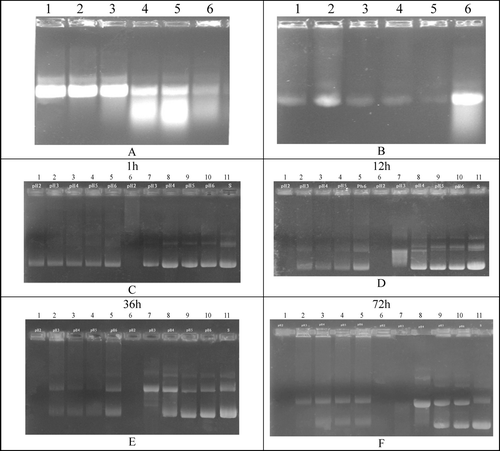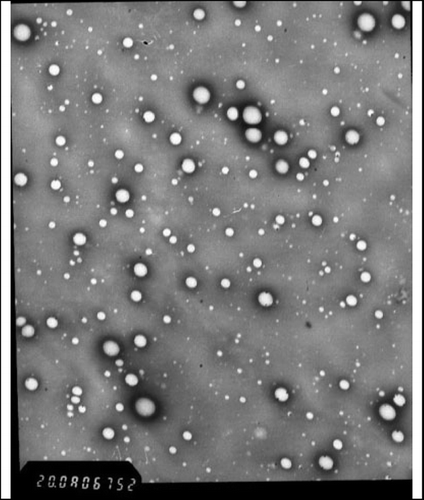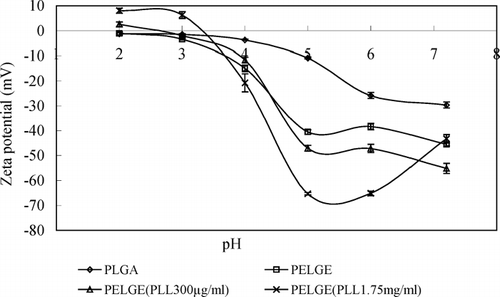Figures & data
FIG. 1 Schematic representation of the PELGE-PLL-pDNA nanoparticle were formed here, with PELGE as the shell and PLL/DNA as the core.
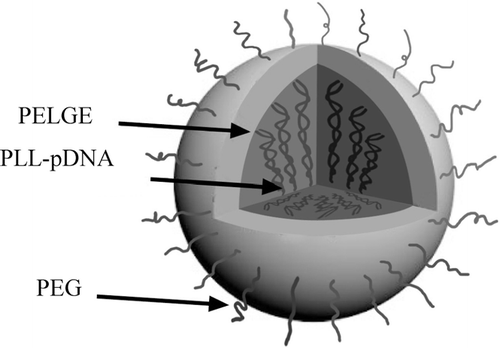
TABLE 1 Size of the nanoparticles formulated using different concentrations of polyvinyl alcohol (PVA) (n = 3)
TABLE 2 Zeta potential of PLGA and PELGE NPs, in 10% serum
FIG. 4 Viability of L929 cells as a function concentration of PLL and PLL-loaded PELGE-NPs. Cell viability was determined by using a MTT assay (n = 3). Each MTT assay was repeated at least three times to ensure reproducibility.
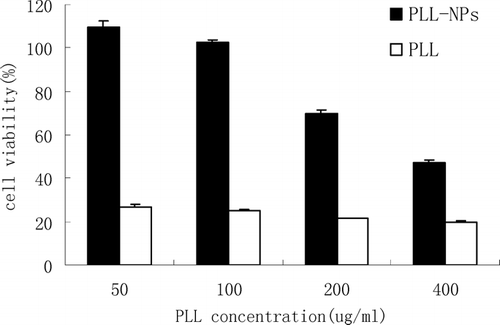
FIG. 5 Stability of peptide/DNA condensates in ultrasonication and acidic microenvironment. (A) pDNA suffered from ultrasonication for 0, 20, 40, 60, 100, and 140 sec (lanes 1 to 6). (B) pDNA/PLL (1:1 w/w) suffered from ultrasonication for 0, 20, 40, 60, 100, and 140 sec (lanes 1 to 5) and then released by heparin. (C–F) pDNA/PLL (1:1 w/w, lane 1 to 5) and pDNA (lane 6 to 10), were subjected to pH 2 to pH 6 for 1, 12, 36, and 72 hr, relative to standard DNA (lane11).
